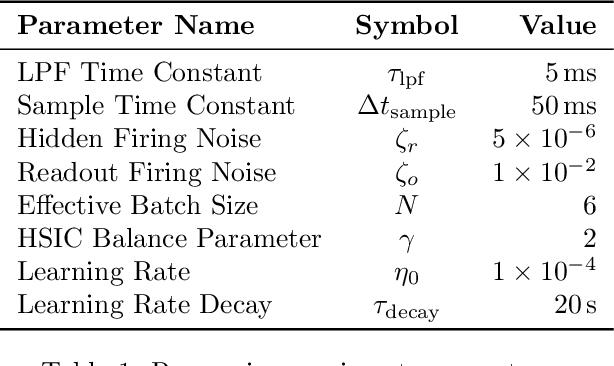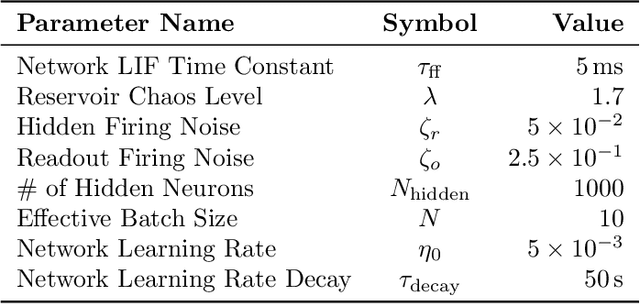Information Bottleneck-Based Hebbian Learning Rule Naturally Ties Working Memory and Synaptic Updates
Paper and Code
Nov 24, 2021



Artificial neural networks have successfully tackled a large variety of problems by training extremely deep networks via back-propagation. A direct application of back-propagation to spiking neural networks contains biologically implausible components, like the weight transport problem or separate inference and learning phases. Various methods address different components individually, but a complete solution remains intangible. Here, we take an alternate approach that avoids back-propagation and its associated issues entirely. Recent work in deep learning proposed independently training each layer of a network via the information bottleneck (IB). Subsequent studies noted that this layer-wise approach circumvents error propagation across layers, leading to a biologically plausible paradigm. Unfortunately, the IB is computed using a batch of samples. The prior work addresses this with a weight update that only uses two samples (the current and previous sample). Our work takes a different approach by decomposing the weight update into a local and global component. The local component is Hebbian and only depends on the current sample. The global component computes a layer-wise modulatory signal that depends on a batch of samples. We show that this modulatory signal can be learned by an auxiliary circuit with working memory (WM) like a reservoir. Thus, we can use batch sizes greater than two, and the batch size determines the required capacity of the WM. To the best of our knowledge, our rule is the first biologically plausible mechanism to directly couple synaptic updates with a WM of the task. We evaluate our rule on synthetic datasets and image classification datasets like MNIST, and we explore the effect of the WM capacity on learning performance. We hope our work is a first-step towards understanding the mechanistic role of memory in learning.
 Add to Chrome
Add to Chrome Add to Firefox
Add to Firefox Add to Edge
Add to Edge